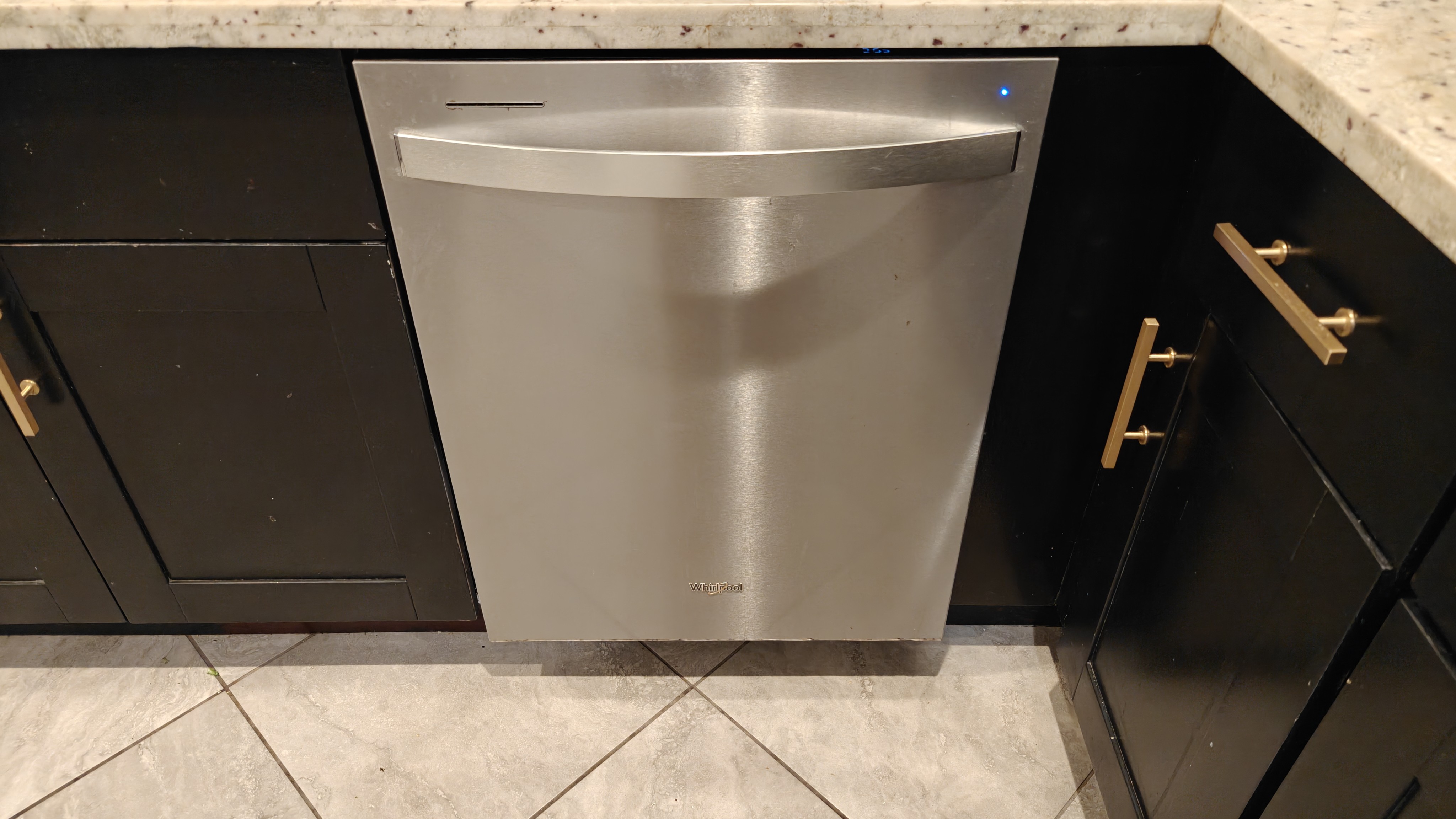Best top load washers 2025: for faster cycle times and a bigger capacity, tried and tested
Wash more clothes in one go with the best top load washers, from brands like Samsung, Whirlpool, and Maytag.
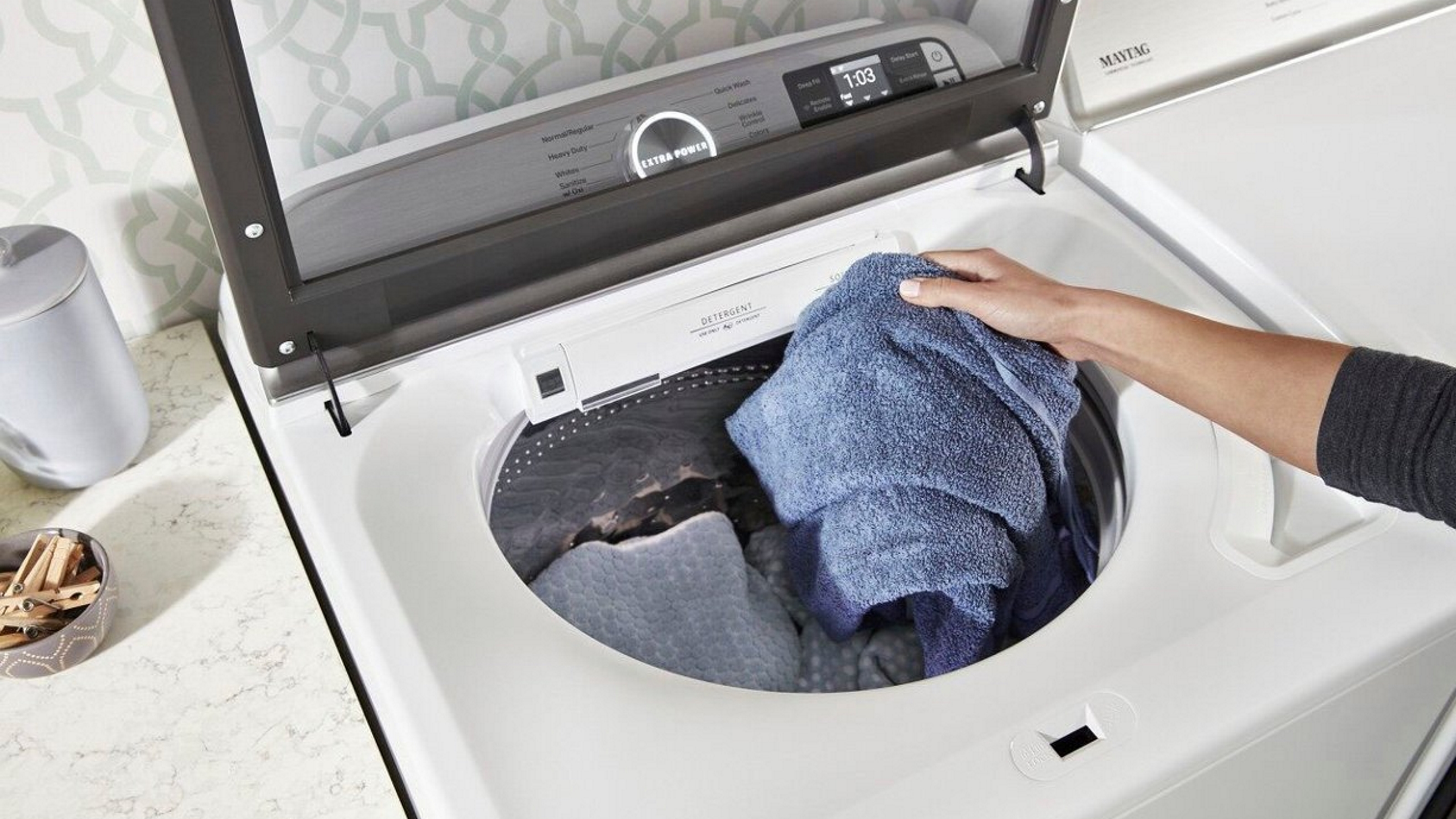
It's essential to have a reliable and efficient washing machine for hassle-free laundry. The best top-load washers are great for people who don't want to bend down constantly. Plus, they're easy to use, so you save time.
Top-loading washers are the best option in large households with lots of laundry. They can wash more clothes and require fewer loads, saving energy, money, and time. The best top-loading washer offers a range of wash cycles and settings for various types of clothes, from delicate fabrics to heavily soiled sports gear. An agitator helps with tough stains, but you should be careful when washing delicate clothes.
Check out our best washing machine guide and see how the products in this guide stack up against the best front-load washers.
The quick list
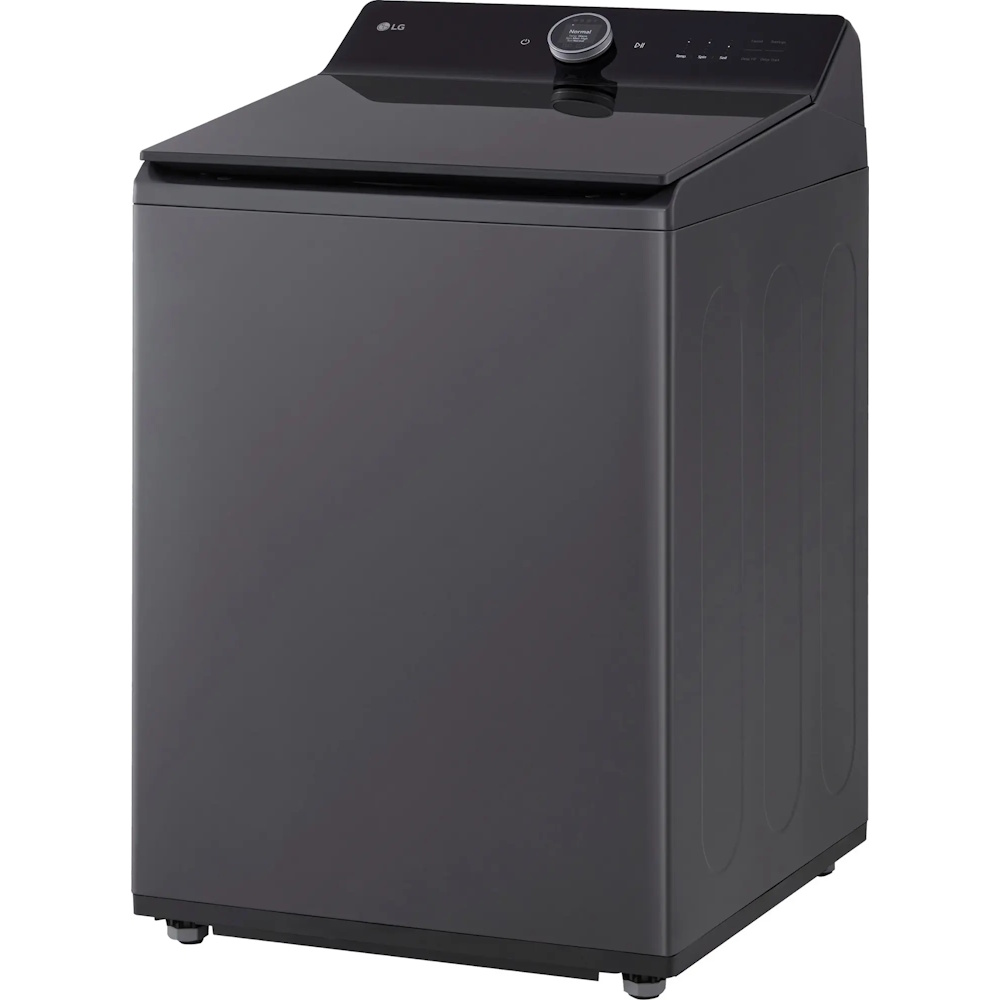
The best top-load washer overall
The LG 5.5 cu. ft. Mega Capacity Smart Washer features 28 wash programs, energy efficiency, and smart technology, making laundry easy and effective for families.
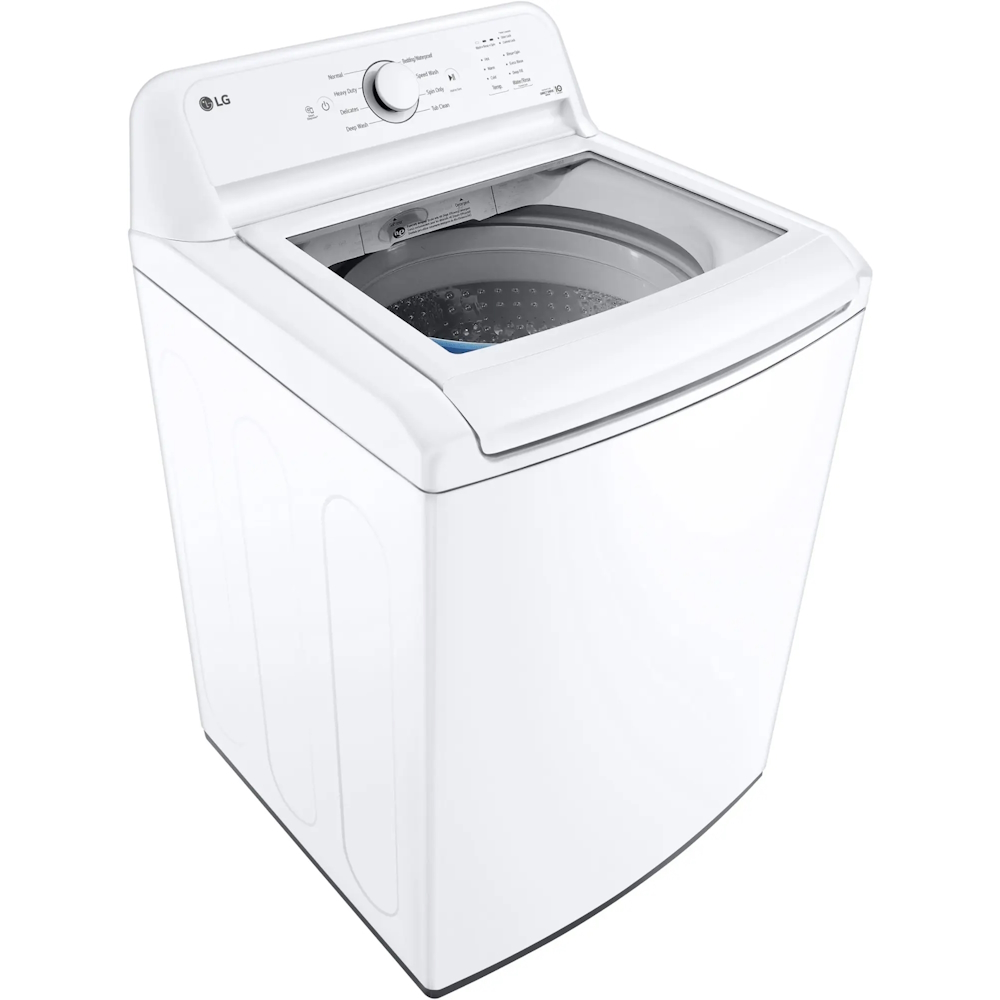
The best top-load washer on a budget
The LG 4.1 cu. ft. top-load washer features TurboDrum Technology for efficient cleaning, a glass lid, and user-friendly controls, though some find water levels insufficient.
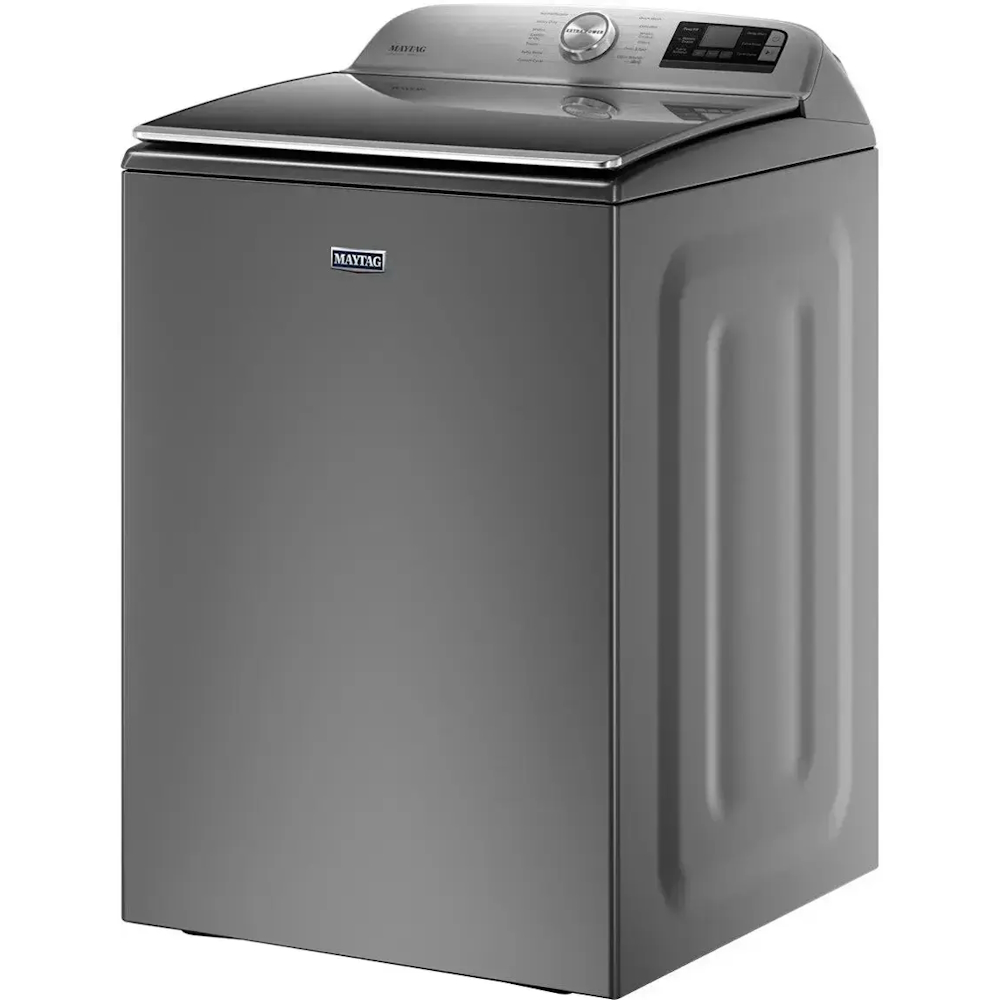
The best premium top-load washer
The Maytag Smart Top Load Washer cleans well but is loud. It has a spacious drum, 13 settings, and an app, but struggles with tough stains.
Load the next products ↴
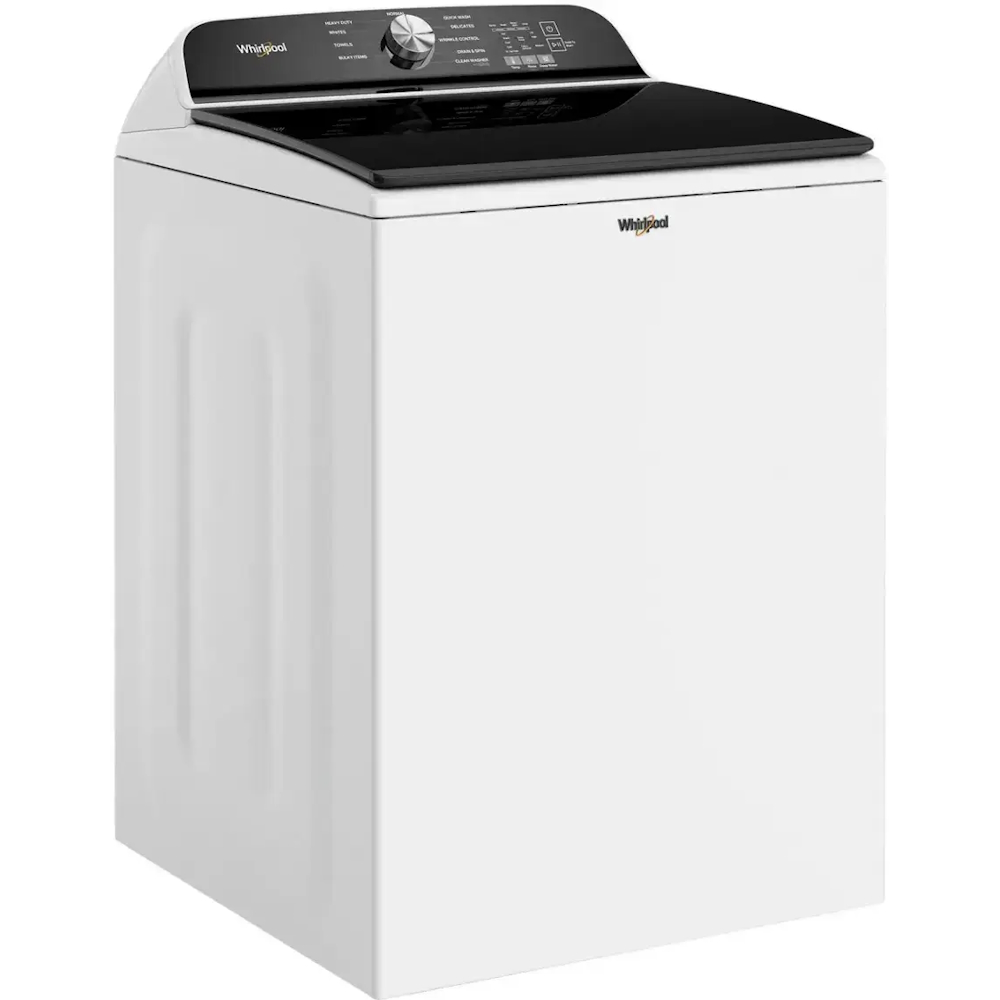
The best compact top-load washer
The Whirlpool 3.8-3.9 Cu. Ft. Top-Load Washer is effective, noisy, affordable, has an agitator, cleans well, and easily handles bulky items.
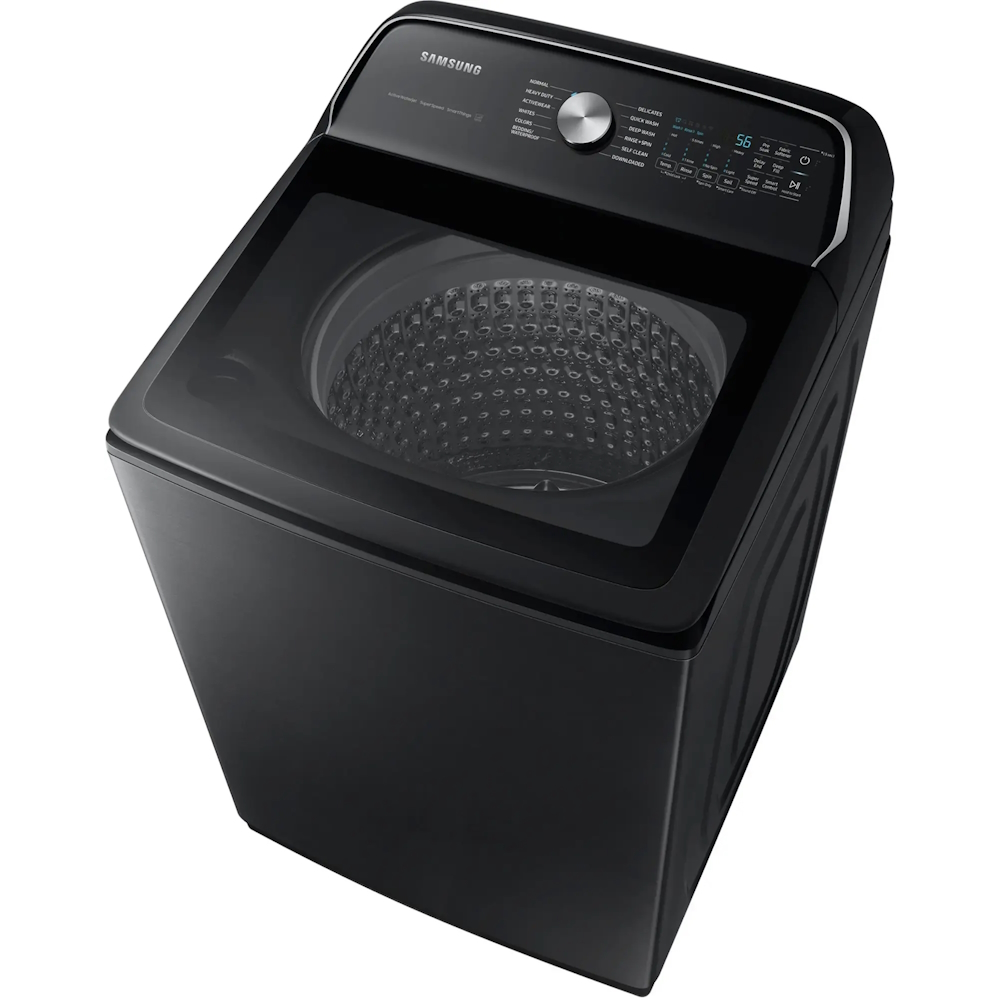
The best large capacity top load washer
The Samsung 5.5 Cu. Ft. Smart Top Load Washer offers fast, efficient washing, spacious capacity, remote control, quiet operation, and sleek design—ideal for busy households.
The best top load washers we recommend in 2025
Why you can trust Top Ten Reviews
The best top load washers we've tested
Our team has thoroughly reviewed the following products featured in this buyer's guide. We strive to provide comprehensive and unbiased rankings based on our hands-on testing and expert research. Our evaluations consider top-rated brands and essential features to assist you in making informed purchasing decisions at the best value.
The best top load washer overall
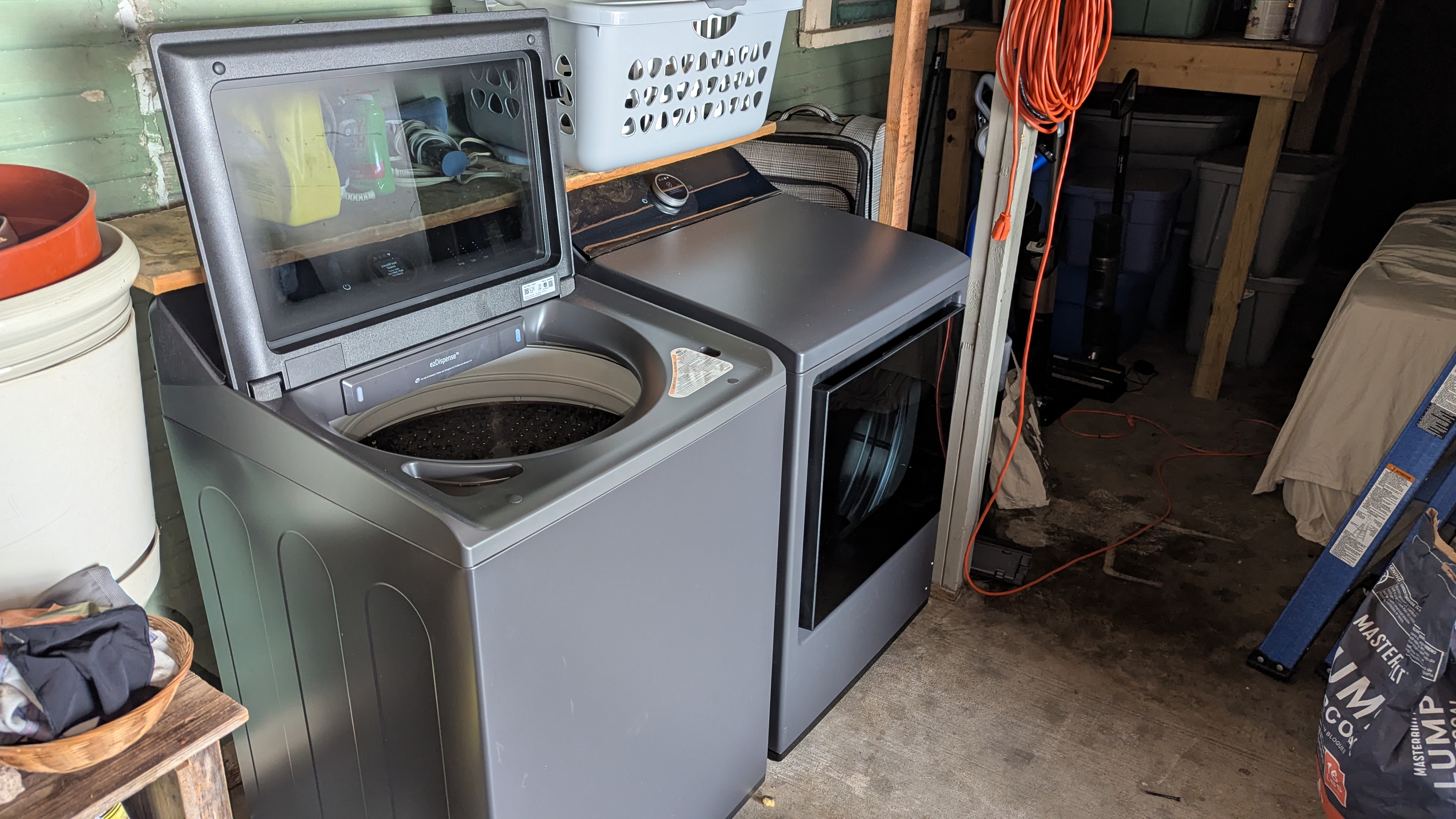
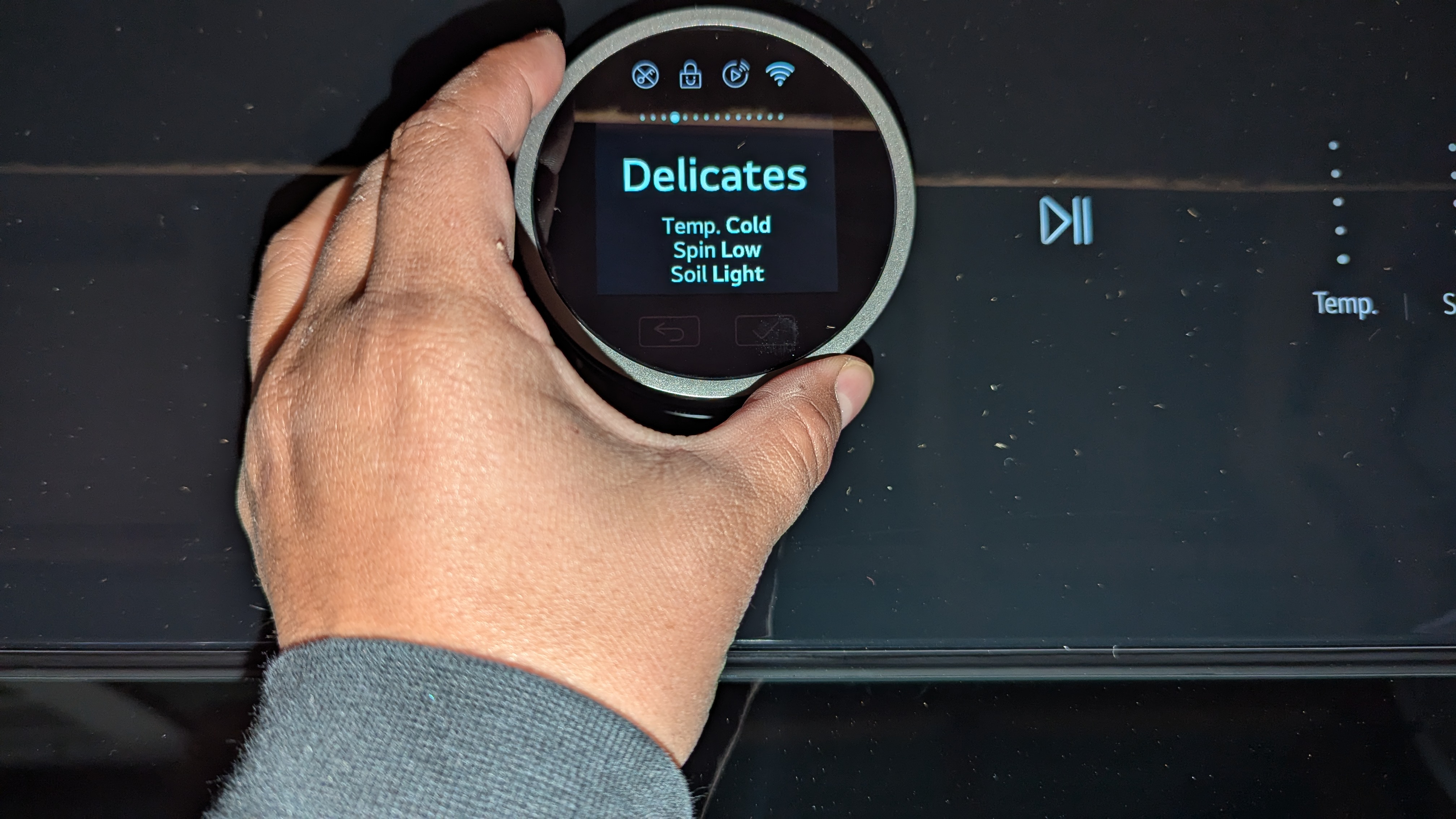
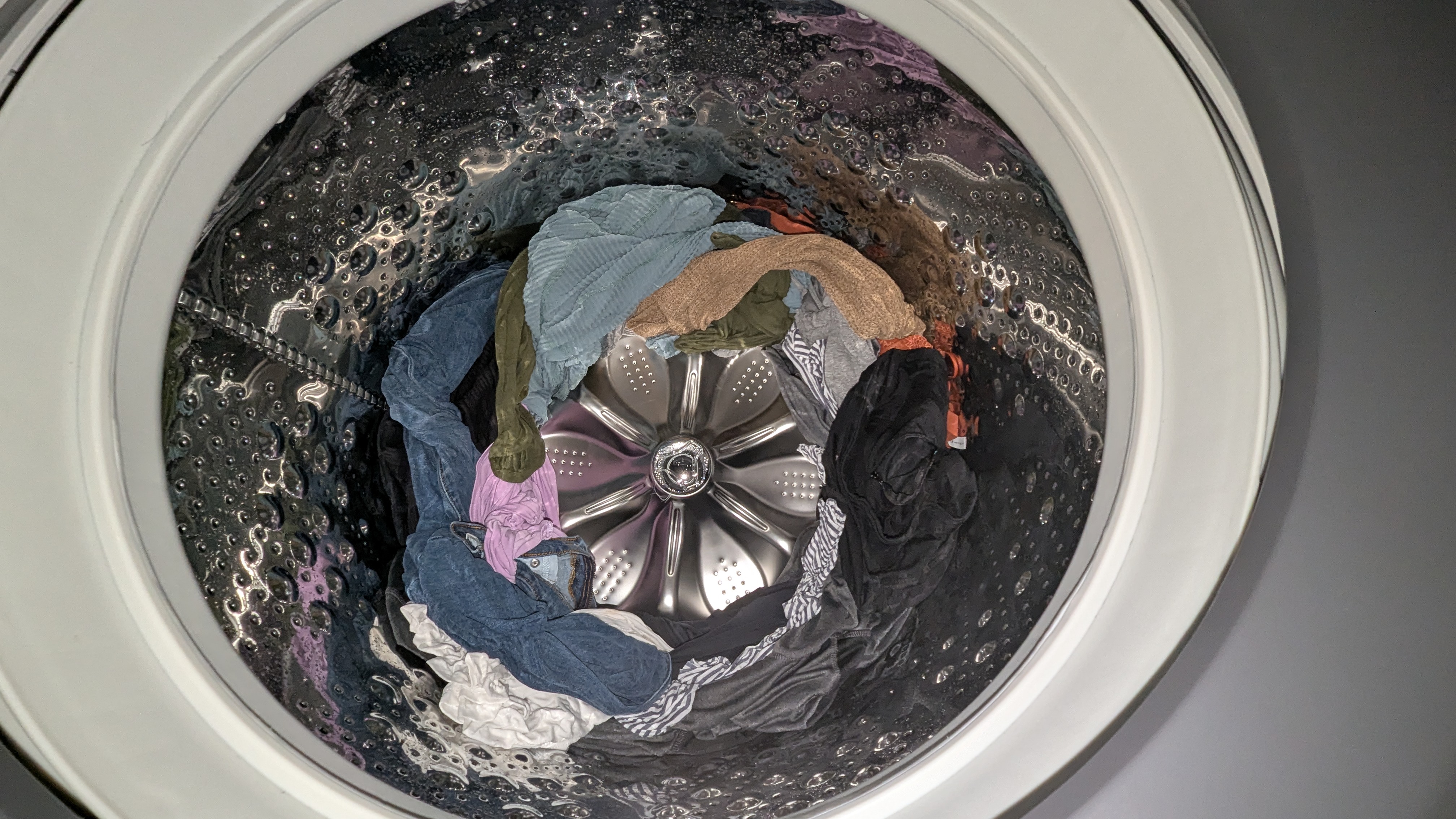
Specifications
Reasons to buy
Reasons to avoid
The LG 5.5 cu. ft. Mega Capacity Smart Top Load Washer offers ample space and energy efficiency, making laundry easier for families. With 28 wash programs, including AI wash and advanced smart technology, it ensures optimal cleaning while conserving resources. Alex's experience highlights its exceptional performance and user-friendly features.
Washing Capacity: The LG 5.5 cu. ft. Mega Capacity Smart Top Load Washer is big enough to fit a king-size comforter and 17 towels, so it's perfect for a family. With this capacity, our reviewer, Alex, washed fewer loads and saved time and effort. It comes with an angled tub so she can reach every garment without straining herself, and the design doesn't have an agitator, maximizing space.
Energy Efficiency: The LG washer uses technology that minimizes water and energy consumption while delivering a great clean. Alex loved that she didn't have to worry about her laundry routine significantly impacting the environment; the washer uses just as much water as needed. It is also Energy Star certified.
Wash Programs: There are so many wash programs that Alex found it a little overwhelming. There are 28 preset options, and she saw a program for pretty much every fabric and stain. There is a special cycle for delicates and heavy-duty bedding, but one of her favorites was AI wash, which automatically adjusts settings for optimal cleaning based on load.
Smart Technology: The washer has the ezDispense Automatic Dispenser, so you don't waste detergent. With app connectivity, Alex could monitor detergent levels and receive reminders when it was time to refill. She could also customize wash settings and select specific programs directly from her phone, making washing less of a chore.
Washing Efficiency: The LG washer consistently exceeded Alex's expectations. She tried various programs, from quick washes to deep cleans. A washing machine that can handle different fabrics and soil levels taught her to prioritize finding the correct settings for each load, resulting in better results.
Read more: LG WT8600CB 5.5 Cu. Ft. High-Efficiency Smart Top Load Washer review

"The LG 5.5 cu. ft. Mega Capacity Smart Top Load Washer is impressively sleek and as modern as possible, with 28 wash programs that make washing every item in your house easier. It’ll easily clean king-size comforters and thoroughly wring out all the water, no matter the load size. Plus, you can pretreat stains with a built-in faucet without worrying about how much detergent to use with the automatic detergent dispenser. The technology and wash programs may take some time to learn how to use them most efficiently, but it’s worth it in the end."
| Attribute | Notes | Score |
|---|---|---|
| Setup | convenient delivery and installation options; user-friendly setup instructions | 9/10 |
| Design | ergonomic tub and automatic dispenser; complex control panel | 9/10 |
| Performance | extensive features, large capacity, and user-friendly design; occasional challenges with stain removal | 8.5/10 |
| Maintenance | angled tub design; Tub Clean program | 8/10 |
| Value | competitive pricing; quality and functionality justify the investment; potential for long-term savings | 8.5/10 |
The best premium top load washer
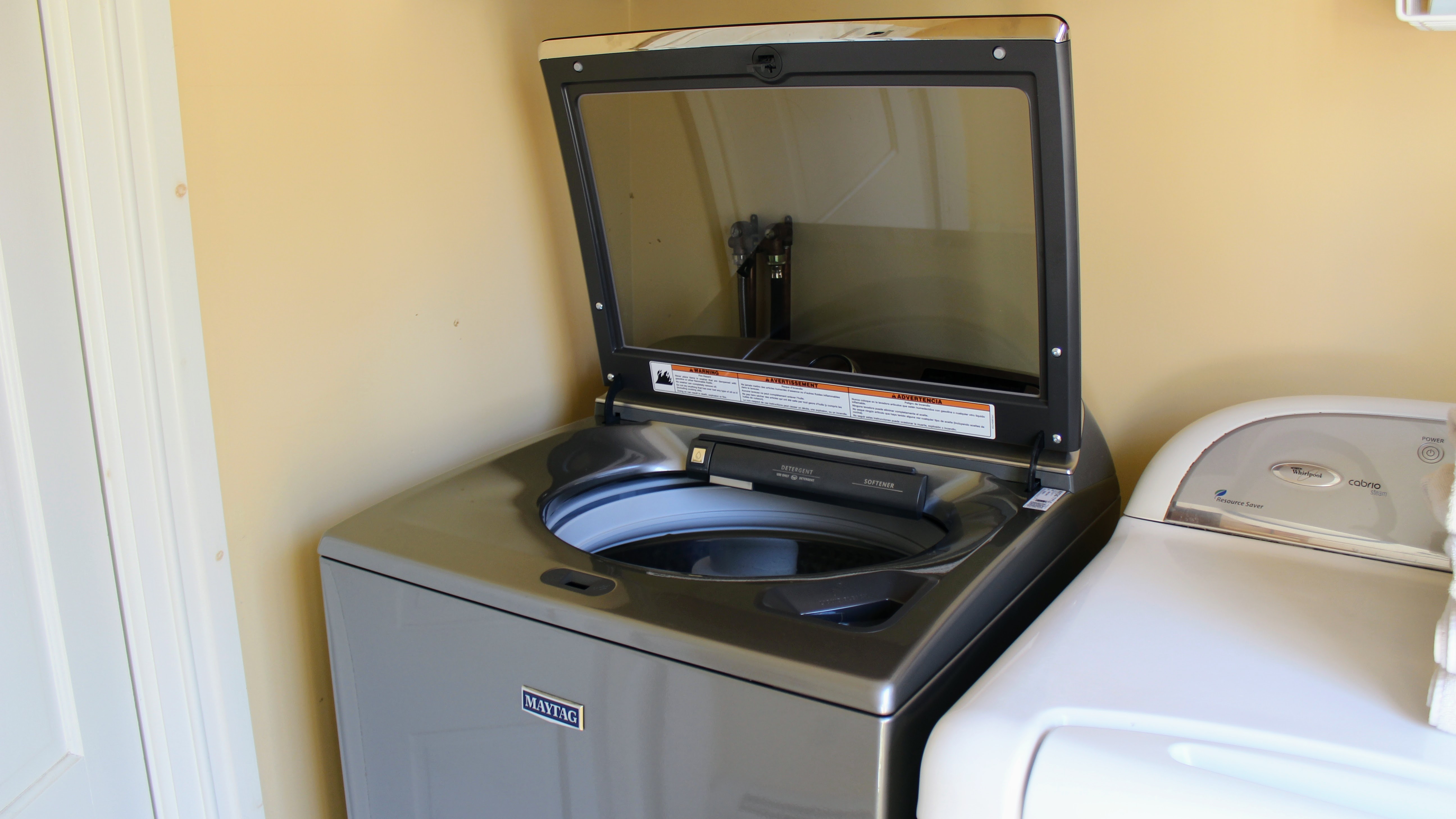
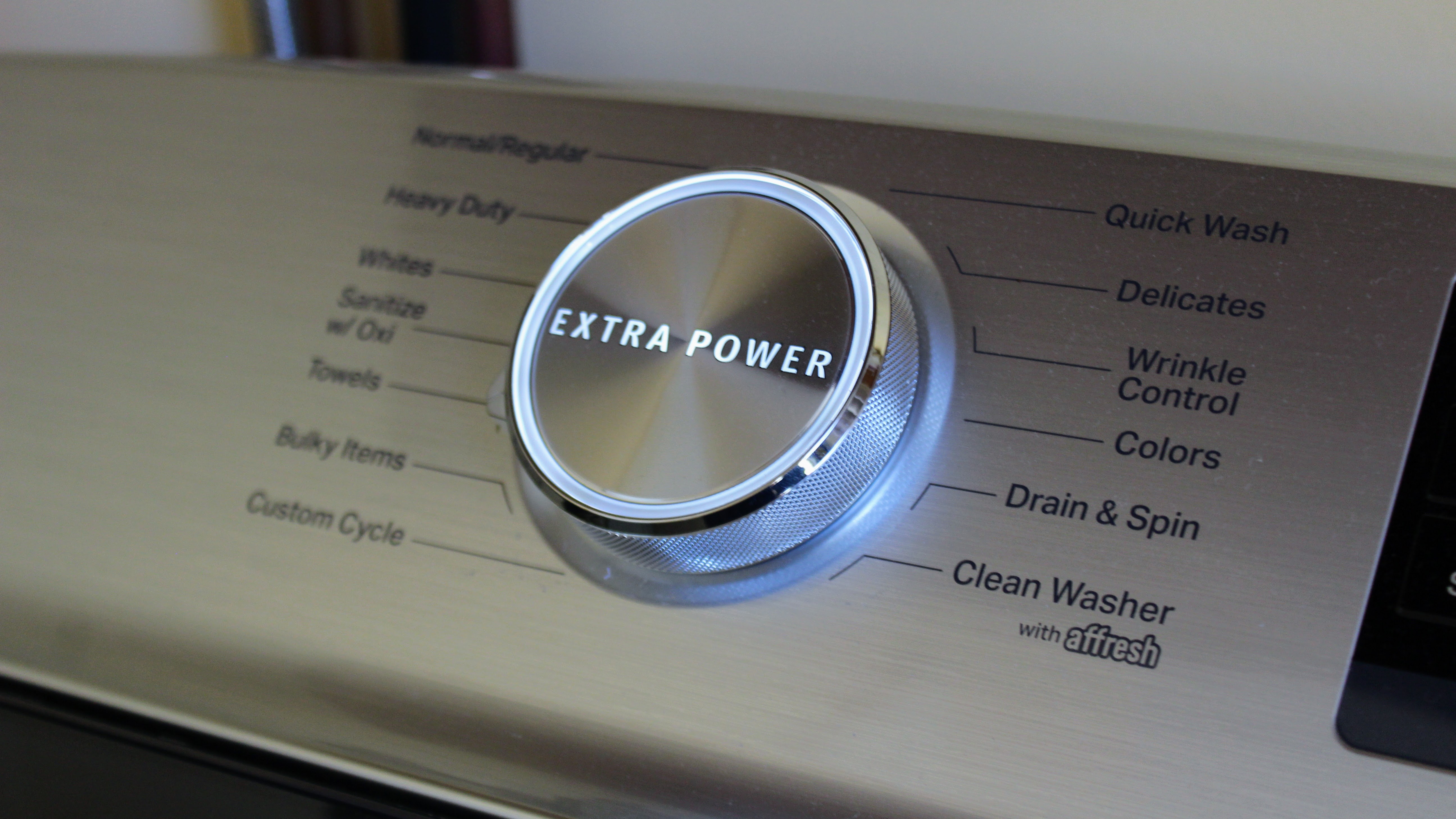
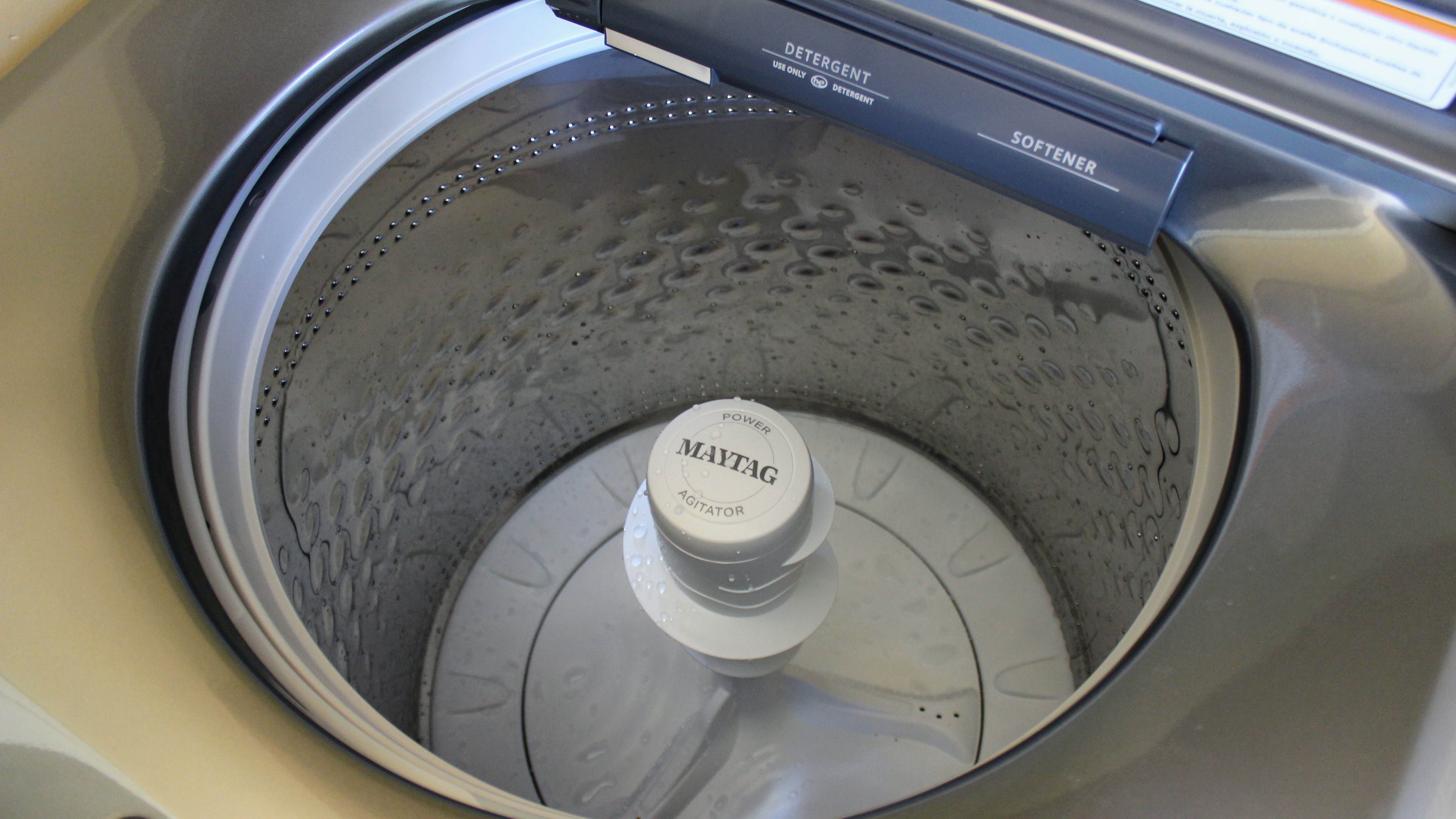
Specifications
Reasons to buy
Reasons to avoid
The Maytag MVW7230HC offers ample washing capacity and energy efficiency. With 13 customizable wash programs and smart technology for remote monitoring, laundry tasks are more manageable. The machine effectively cleans all fabric types, leaving clothes fresh while reducing utility bills.
Washing Capacity: Camryn loved that the washer could handle sizable loads so that she could wash her family's linens and clothes in fewer cycles. However, when she washed queen-size quilts, she had to arrange them carefully during the spin cycle to ensure they balanced correctly. It was also great that it could handle smaller laundry items, so she didn't have to worry about overloading. Camryn's laundry room was flexible with the machine because of its average size, and she enjoyed having a little more space to maneuver than with her previous washer.
Energy Efficiency: Since Camryn started using this machine, her utility bills have significantly decreased. It has various water levels and spin speeds, so she can customize each load to save energy and water. She liked how it used less water during testing without sacrificing cleaning effectiveness. The washer boasts an Energy Star rating, so she knew it would meet strict efficiency guidelines. As a result, she was saving money and reducing water usage.
Wash Programs: There are 13 different settings, so you can choose the proper cycle for whatever fabric you're washing and how dirty it is. The bulky setting handles larger loads without struggling. Whether Camryn washed delicates or heavy-duty towels, it handled them all well. With options like deep fill and extra rinse, all detergent is washed away, leaving clothes fresh. Thanks to the interface, it's also easy to navigate through the options.
Smart Technology: The Maytag app lets you monitor the washing cycle from your phone, which is super convenient. Since Camryn could check on each load while working in another room, she didn't have to keep running back to the laundry room. She appreciated this modern functionality as someone who values tech in everyday tasks. She even got updates on when she had to switch loads or if there was an issue.
Washing Efficiency: After each cycle, Camryn's clothes smelled great. During tests, she found it was pretty effective at removing common stains but had to pre-treat tougher stains to get the best results. She was impressed with the spin cycle because laundry came out drier than in her old machine, and not only does that save energy, but it's also more efficient. Heavy items occasionally became unbalanced; however, they required manual adjustment.
Read more: Maytag MVW7230HC 5.2 cu. ft. Smart Top Load Washer review

"The Maytag Smart Top Load Washer with Extra Power offers solid cleaning performance and high-end features, but it is noisier than your average washer."
| Attribute | Notes | Rating |
|---|---|---|
| Setup | manageable weight and included instructions; delivery service was efficient and well-coordinated | 9/10 |
| Design | user-friendly, featuring a large dial and LCD screen for easy selection of wash settings; ability to customize cycles with various options, such as spin speed and water temperature; need to hold the start button for a few seconds | 8/10 |
| Performance | delivers strong washing performance, effectively handling a variety of loads and removing common stains; Extra Power button; pre-treatment may still be necessary for tougher stains; spacious drum accommodates large loads | 7/10 |
| Value | priced higher than basic models | 7/10 |
The best compact top load washer
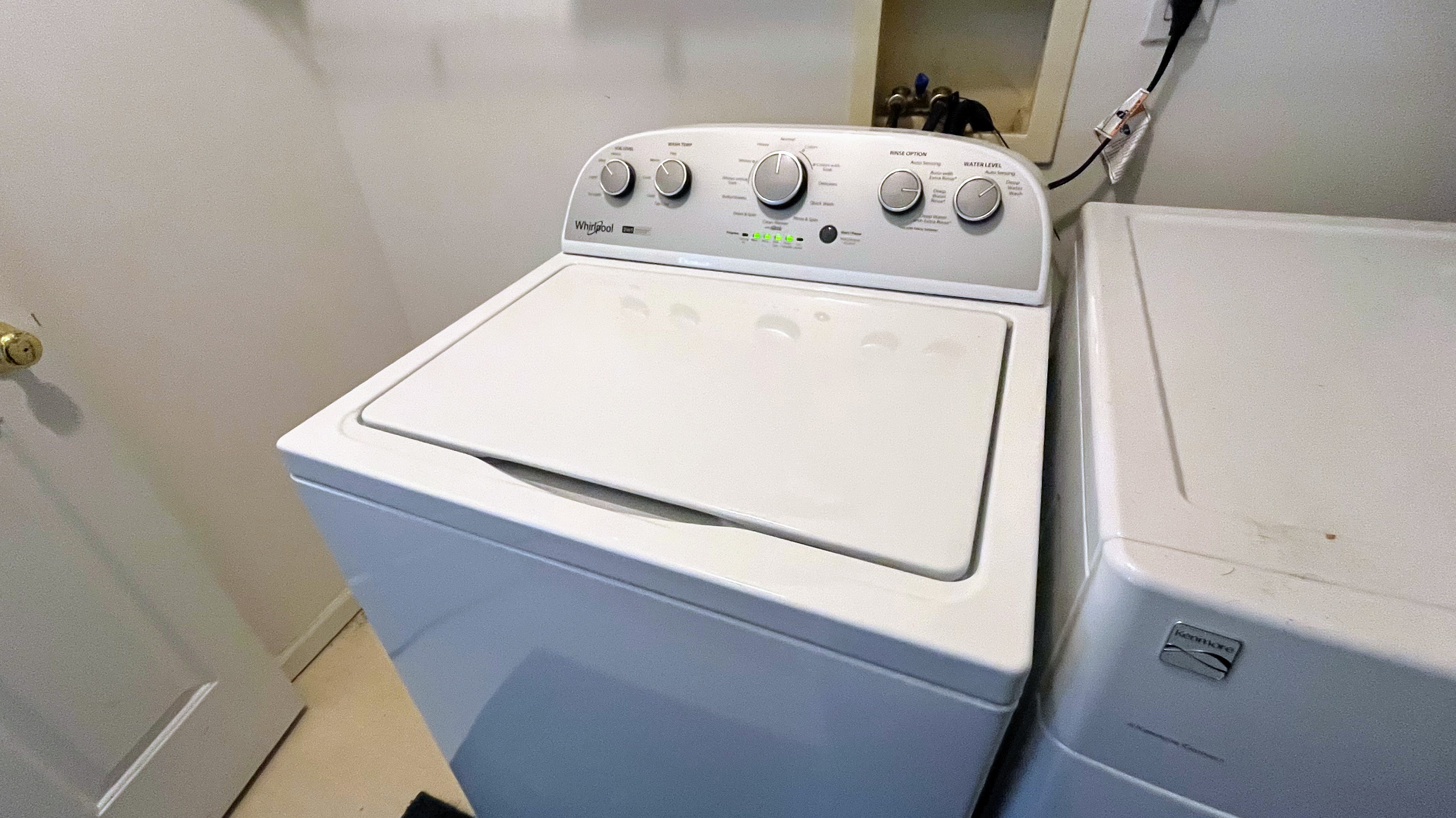
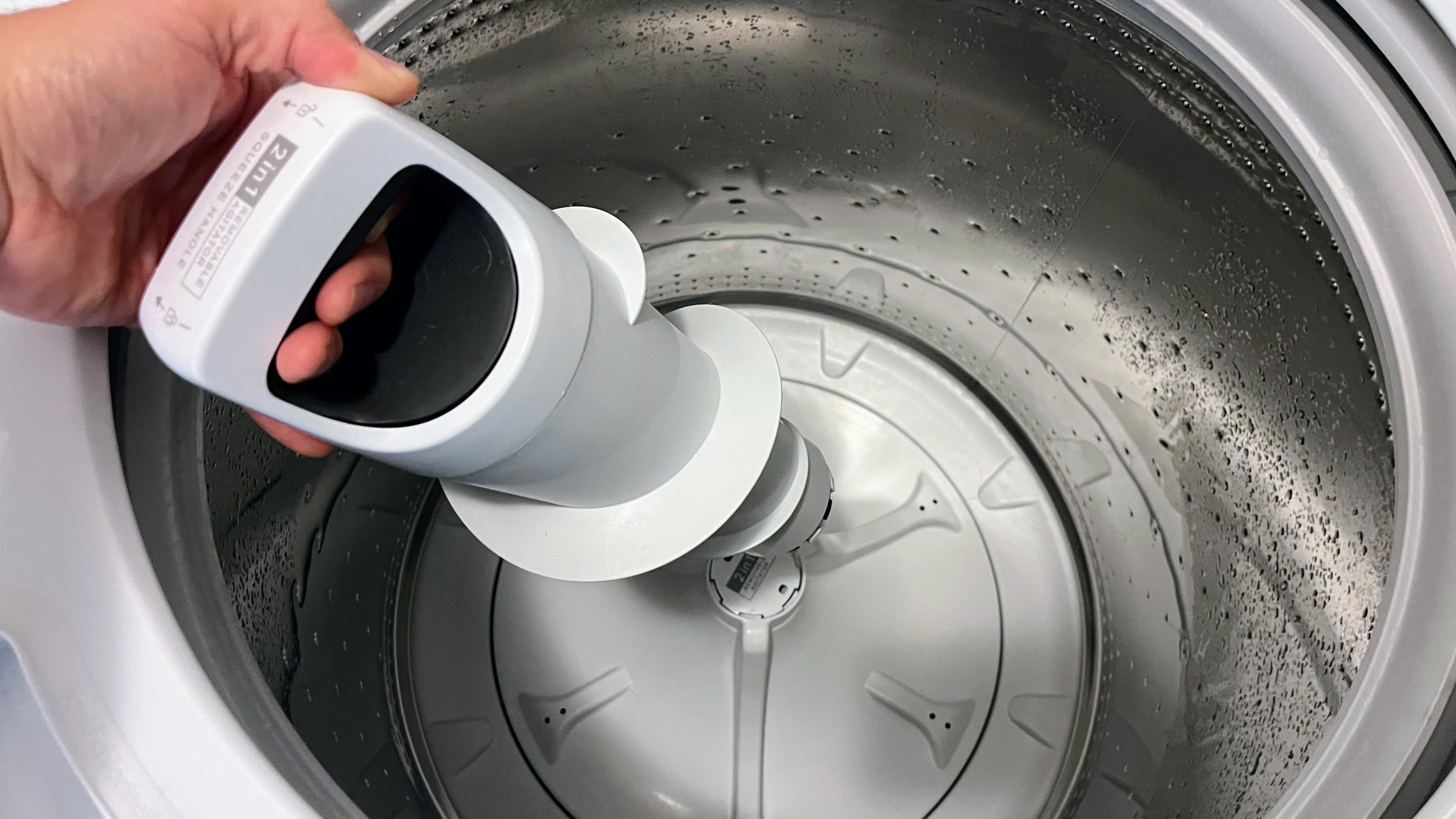
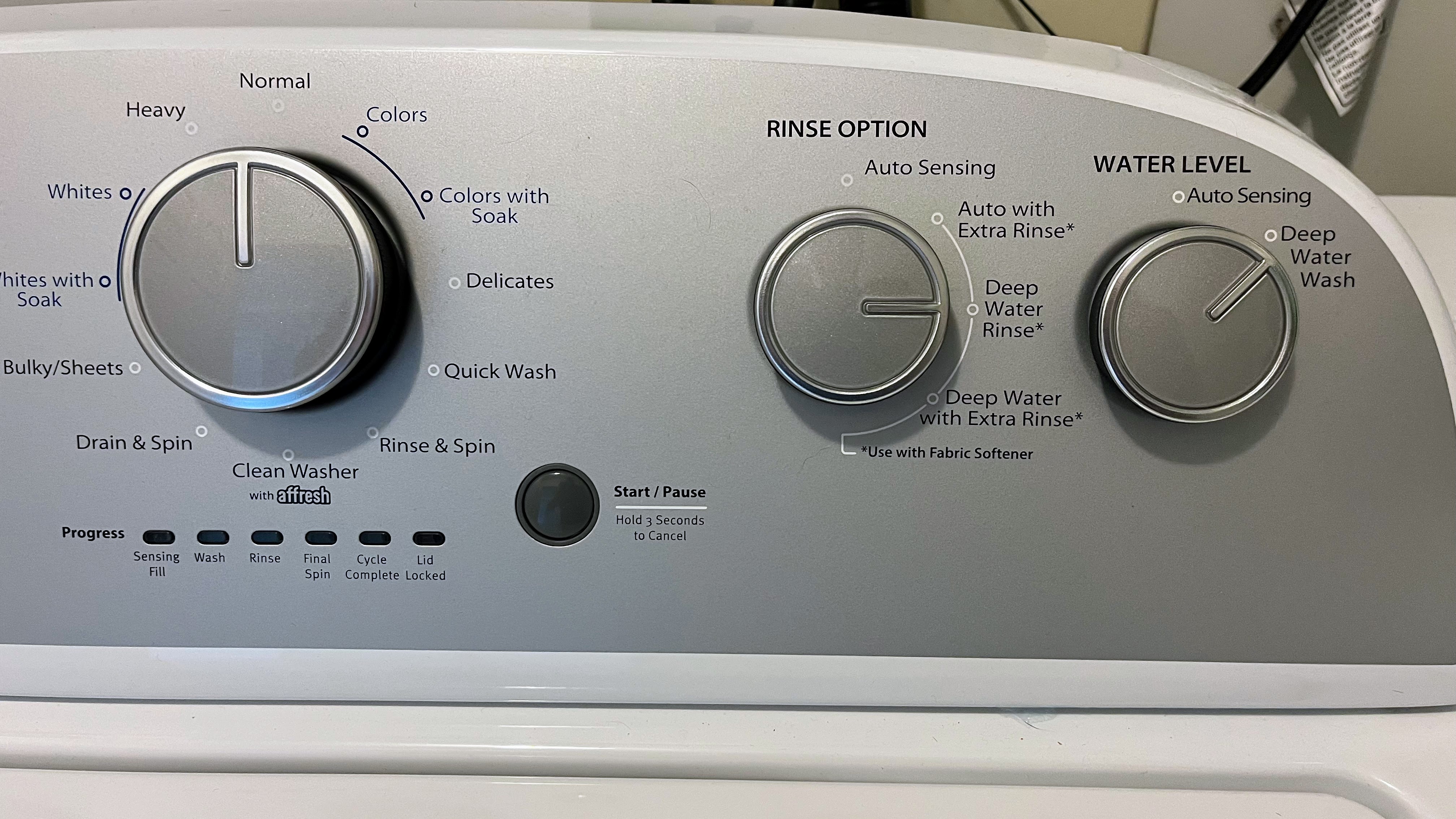
Specifications
Reasons to buy
Reasons to avoid
After the agitator is removed, the Whirlpool WTW4957PW efficiently accommodates bulky items like queen-size comforters and towels. It enhances the laundry experience with energy-saving features, user-friendly controls, and sufficient wash programs. Despite the absence of smart technology, it delivers impressive cleaning results and simplifies laundry tasks.
Washing Capacity: After removing the agitator, James could wash bulky items like queen-size comforters and bed sheets without any problems. He got loads that weighed about 11 pounds, and there was still plenty of room. He could fit in a complete set of towels for regular laundry days, and they barely filled a third of the drum. For households that do a lot of laundry, this would be handy. James' laundry tasks became much more efficient because the washer could handle larger loads without sacrificing wash quality.
Energy Efficiency: The washer uses less energy because it has fewer electronic components. This model doesn't have every feature, so James could prioritize energy efficiency. His energy bills have stayed pretty stable since using it, and the controls have options, including auto-sensing water levels, that help cut down on waste. While it doesn't have some eco-friendly features from higher-end models, the washer effectively meets basic needs without wasting much energy.
Wash Programs: The washer's dial allows you to select soil levels and temperatures, so you can wash different fabrics however you like. James found the options sufficient for his laundry routines, from delicates to bulkier items. Quick wash is excellent when in a hurry. It was great to run a load in just over 30 minutes, and Affresh's self-clean cycle was another thoughtful addition, especially since maintaining a washer isn't always top of mind.
Smart Technology: The appliance doesn't have app support or remote management, which James found he missed. The washer works well, but he wished he could control it with his smartphone. The lack of displays and notifications for cycle completion left him disconnected from the process. The controls are pretty easy to use in its defense, so he managed cycles efficiently. This will likely decrease the cost, making it more affordable for budget-conscious buyers.
Washing Efficiency: While testing the washer on heavily soiled clothes, James found that a second wash was needed for some stains, but that wasn't a dealbreaker for James. When he ran a stained white shirt through a heavy soil cycle, most marks came out nicely after bleaching it. Stainless steel drums seem to enhance cleaning power because clothes rub against each other so well, and while James could hear it operating a little louder than some premium models, the clean results it delivers earned his appreciation. The spin cycle also does a great job of extracting water, lessening the dryer's workload.
Read more: Whirlpool WTW4957PW 3.8 Cu. Ft. High Efficiency Top Load Washer review

"The Whirlpool 3.8-3.9 Cu. Ft. Top-load washer is not going to turn heads, but it doesn’t have to. While light on features—it doesn’t even have a display—and loud in operation, it does a good job cleaning and comes with one very cool trick: a removable agitator that allows larger loads. Plus, the price isn’t bad."
| Attribute | Notes | Score |
|---|---|---|
| Setup | process involves connecting inlet and drainage hoses and possibly adjusting the leveling feet with a wrench | 8/10 |
| Design | basic but functional; robust dials for selecting soil level, wash temperature, and load type; absence of a display for cycle time is a drawback; start button requires two presses; removable agitator adds versatility | 6/10 |
| Performance | performs competently, effectively cleaning most loads and leaving clothes smelling fresh; heavily soiled items may require a second wash; handles a variety of fabrics well | 7/10 |
| Value | a solid option for those seeking a versatile and reasonably priced washing machine | 7/10 |
More top load washers we recommend
Top Ten Reviews is on a mission to review everything we feature in our buyer's guides. Still, while we work hard to make this a reality—or where this isn't possible—some of our guides still feature rankings based on our team's considerable expertise and research.
While we haven't been able to test some of the units in this guide in person, we've instead honed in on top-rated brands and used our knowledge of the best features to help you make the right decision for your home, all for the best price.
The best top load washer on a budget
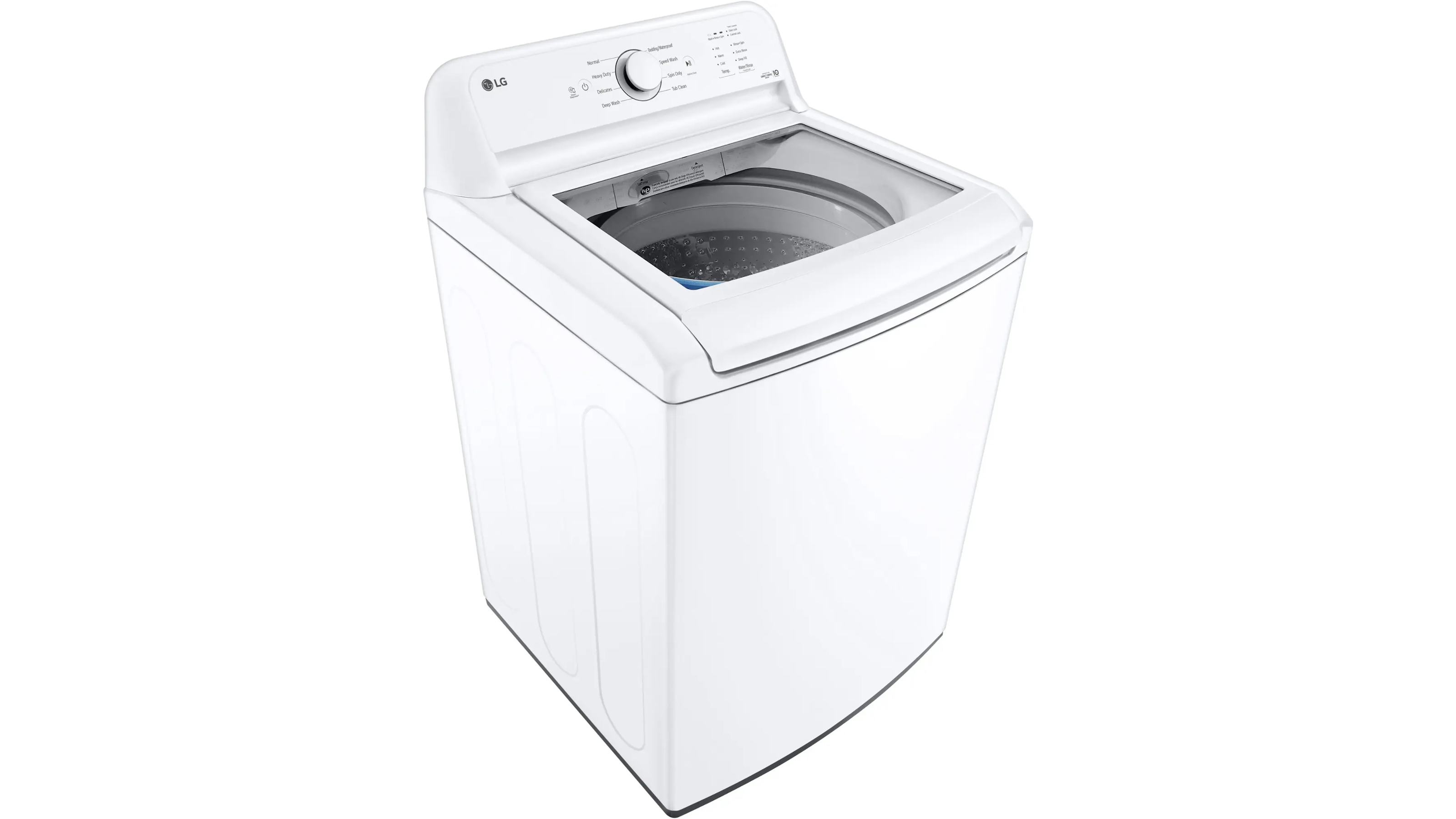
4. LG WT6105CW 4.1 Cu. Ft. High-Efficiency Top Load Washer
Specifications
Reasons to buy
Reasons to avoid
LG's 4.1 cu. Ft. Top-load washer with TurboDrum Technology provides efficient and effective cleaning. With TurboDrum Technology, the drum and pulsator rotate in opposite directions for a powerful wash. This design reduces tangling and improves cleaning. This washer also uses less water and energy than traditional models, so it's eco-friendly.
This model has a glass lid, which allows users to watch the wash cycle without interrupting it. It also includes Deep Wash with Water Plus, which helps cover larger or dirtier loads with additional water.
In general, people are pretty happy with the LG 4.1 Cu. Ft. High-Efficiency Top Load Washer. Its quiet operation and user-friendly controls make it a convenient choice for many families, thanks to its performance and features. Another thing people love about the washer is how well it cleans clothes and how water-efficient it is.
However, some users have raised concerns about the water level, saying it might not always be enough for larger loads unless you use the Deep Wash option. The spin cycle is also sometimes mentioned as being unsatisfactory.
The best large capacity top load washer
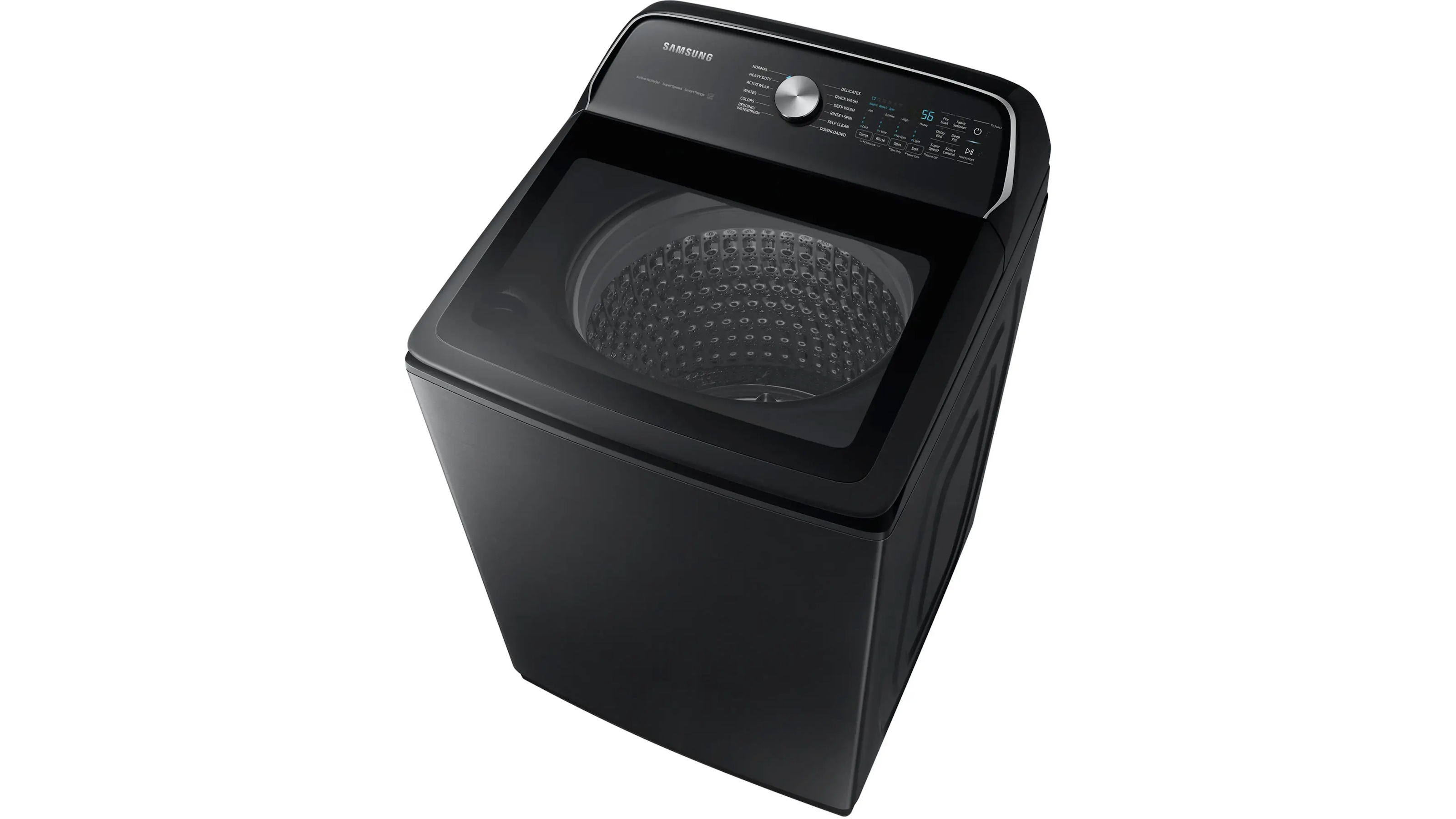
5. Samsung WA55CG7100AV 5.5 Cu. Ft. High-Efficiency Smart Top Load Washer
Specifications
Reasons to buy
Reasons to avoid
Samsung's 5.5 Cu. Ft. High-Efficiency Smart Top Load Washer has impressive capacity, advanced technology, and great performance, making it a great choice for big-capacity washers. Its standout feature is the Super Speed Wash, which lets you wash the whole thing in 28 minutes without sacrificing cleaning effectiveness. This feature is great for busy households.
With a spacious 5.5 cubic feet capacity, the washer easily accommodates bulky items, such as comforters, so you don't have to run as many cycles. Smart Control technology makes laundry routines more convenient and flexible, as users can monitor and control them remotely via a smartphone app.
Moreover, with Vibration Reduction Technology+, this washer ensures quiet operation even during high-speed cycles, and its sleek, modern look complements contemporary homes.
Many users praise the Samsung 5.5 Cu. Ft. High-Efficiency Smart Top Load Washer for its large capacity and rapid wash. Families and people with big laundry needs love it because it handles lots of loads well.
While the smart features are well-received for their convenience, some users notice a slight learning curve in mastering the app's full functionality. A few reviews also mention connectivity issues, but software updates usually fix them.
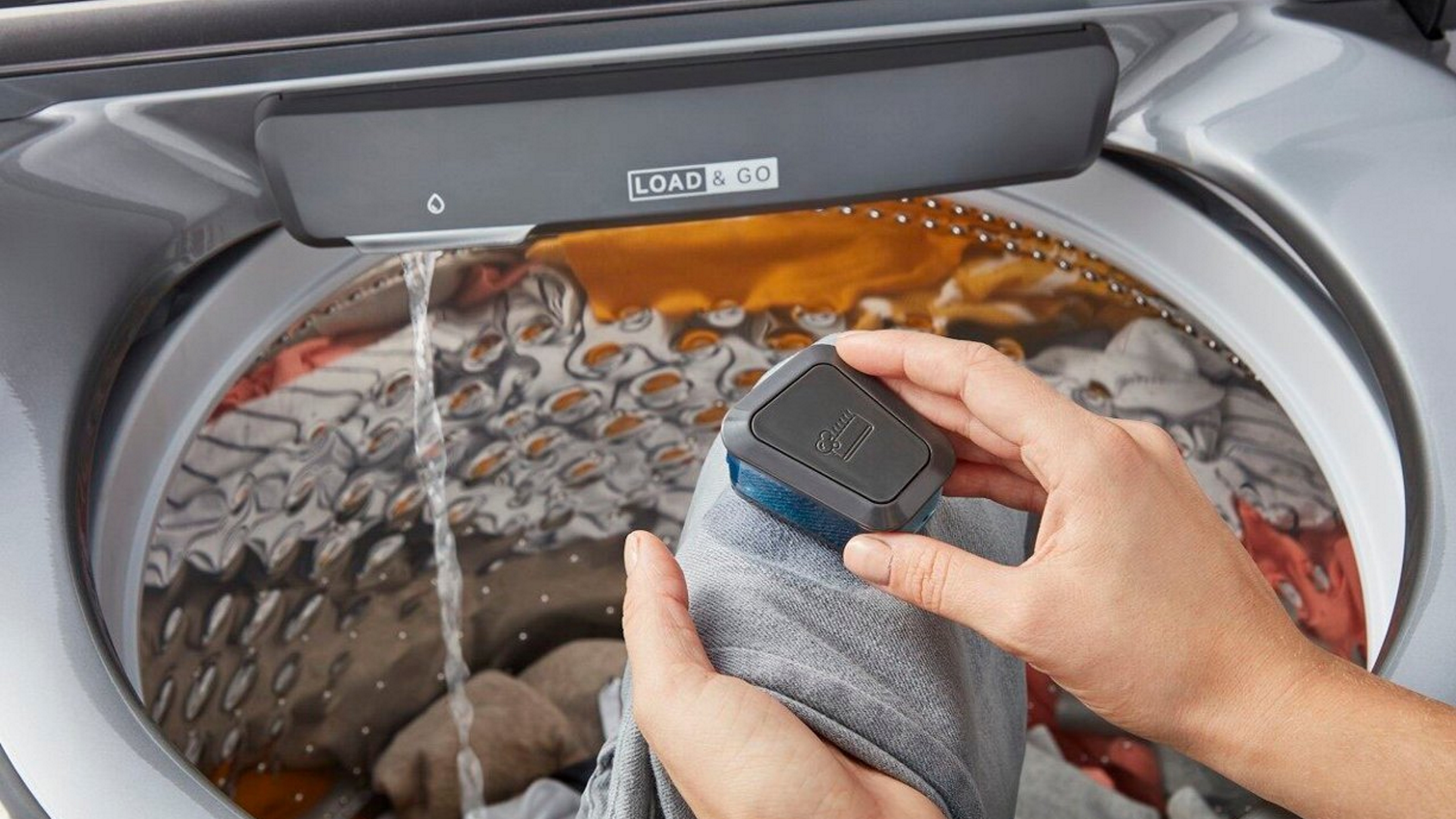
How to choose the best top load washer for you
Choosing the best top-load washer involves several key considerations. Here's a guide to help you make an informed decision:
Capacity: You can choose top-load washers ranging from 3.5 to 5.5 cubic feet. If you have heavy laundry loads, choose a larger capacity, while a smaller capacity is better if you do only a few loads a week.
Energy Efficiency: Energy Star-certified washers save energy and water, which helps the environment. Check the water usage per cycle; lower numbers mean a more efficient machine.
Features: Many top-load washers have multiple wash cycles, temperature settings, and soil level adjustments. You might even be able to control the washer remotely or get notifications on your phone.
Agitator vs. Impeller: Most top load washers come with either an agitator (a central post that moves clothes around) or an impeller (a cone that spins). Choose based on your laundry preferences. Agitators can be rougher on fabrics, while impellers are gentler, giving you more room for large loads.
Price: Last but not least, determine your budget. Prices can range from a few hundred to over a thousand dollars. Balance your features with your budget to get the best deal.

Glenn Lewis was named president of Mr. Appliance, North America’s leading appliance repair franchise providing customers with full-service residential and light commercial appliance repair, in May 2024. He is responsible for the overall leadership and growth of Mr. Appliance throughout the US and Canada. Before Neighborly, Glenn served as Executive Vice President at The Décor Group in Lubbock, Texas.
Glenn Lewis, the president of Mr. Appliance, a Neighborly Company, spoke to us about the benefits of front-load washers:
"Top load washers are the traditional style, where you load clothes from the top. They have either an agitator or an impeller to move the clothes through water and detergent. These machines are great for their convenience—easier to load and unload, especially if you have trouble bending over. They generally complete cycles faster but tend to use more water and energy than front load machines."
"A wash-dry combo machine is an all-in-one unit that washes and dries clothes. It’s perfect for small spaces where you can't fit a washer and a dryer. However, the drying process in these machines, often ventless, can take longer than traditional dryers. They're convenient but might not dry large loads as efficiently as separate units."

Matthew Glynn is Hisense's Product Marketing Manager for white goods and appliances. Matthew has worked in a product development/management role for over 10 years and has previously worked across marketing and R&D functions with FMCG and CE. Matt focuses on the consumer arm of products at Hisense, focusing on white goods, with a passion for the products and ensuring consumers have the best experience.
‘“The better the energy rating on a washing machine, the more money you’ll save in the long run,” says Matthew Glynn, Product Marketing Manager for Hisense UK, on how to save money on your laundry.
“You can also use specific programs on the machine, such as Eco Wash, as this best combines low temperature and energy consumption. If your machine has a large capacity, you’ll also save on energy by doing fewer loads of washing. I’d recommend this, particularly for larger households.”
Top load washer FAQs
What are the benefits of a top load washer?
Top load washers appeal for many reasons, though a big factor is affordability. You can find top-rated and affordable top-load washers for as little as $399, making them a more accessible purchase.
Convenience is also of note, with a top load washer being easier to fill daily, saving you from kneeling or bending over. Filling their washer from the top is exceptionally useful for those with limited mobility, though this appliance makes it difficult to stack even the best dryer on top. If that's important to you, you may want to opt for one of the best washer-dryer combos.
Customers who purchase top-load washers also often enjoy their relative simplicity. There’s no need to fill or clean an extra detergent drawer, as this is added into the drum at the top instead. Capacity is another draw that makes this type of washer appealing to families or larger homes; if you can fit more into one cycle, it’s time-saving and energy-efficient.
If you’re prone to forgetting an odd sock and finding it after you’ve put a load of laundry on, a top-load washer might appeal. With it, you can always add garments mid-cycle by lifting the lid, an option you don’t have with front-load washers.
More direct comparisons are in our top load vs. front load washers guide.
How much do top load washers cost?
Many households like top-load washers because of their ergonomic design and ease of use. Brand, capacity, features, and energy efficiency ratings affect the cost of top-load washers. Basic top-load washers start around $400 to $700.
These models typically offer essential wash cycles and functions for those who want a straightforward appliance without extra frills. Amana and Insignia offer top-load washers at budget-friendly prices, typically between $700 and $1,200.
This price range has more advanced features, like more wash settings, bigger drums, and better energy efficiency. High-end top-load washers cost $1,200 to $2,000 or more. Whirlpool, LG, and Samsung all have smart controls and digital displays that combine functionality with modern technology.
They usually come with steam cleaning, specialized wash cycles, and high durability. You should also consider installation and delivery costs, as well as maintenance costs, and top-notch models from brands like Maytag, Bosch, and GE. With enhanced performance and sleek aesthetics, these brands cater to people who want quality and innovation.
Reviews
Whirlpool 24" Stainless Steel AI Dishwasher Review
Napoleon TravelQ PRO285 Portable Gas Grill review
Dreame L40 Ultra Robot Vacuum Cleaner and Mop review: almost hands-free cleaning
GE Profile Smart Mixer with Auto Sense review: a powerful, thorough mixer
Echo eForce DPB-2500 review: a leaf blower as a snow removal tool?
DPAS-2100 + Pro Paddle Attachment review: a new way to remove snow this winter?
Midea MAD53109APK 5.5QT Air Fryer review: a small, simple, and highly effective option
Eureka J15 Pro Ultra Robot Vacuum review: hands-free cleaning for busy families
The best top load washer depends on your laundry needs, your budget, and the features you want.
How long do top load washers last?
Most top-load washers last 10 to 14 years if they're kept well. They are known for their durability and ease of use. A washer's lifespan depends on many things, like quality, frequency of use, and maintenance practices. Brand and model also play a big role.
A high-end brand can last longer because it has stronger materials and better technology. Budget models might not last as long because of lower-quality components. Frequency of use is also an important factor. If you use a washer several times a week, it's more likely to wear out.
Maintaining your top-load washer will extend its life. Regular heavy loads can strain the motor and other components. You can prevent premature failures by cleaning the drum, checking hoses for leaks, and not overloading it. You can also extend the life of your washer by inspecting and replacing worn parts like belts and seals.
When is the best time to buy a top load washer?
Consumers can take advantage of discounts and promotions during several key times of the year when looking for a top-load washer deal. There are usually big sales on top-load washers around Memorial Day, Labor Day, and Black Friday, which can greatly affect the price and selection.
Retailers usually offer discounts during these busy times, making this an excellent time to shop for washers. During this time, retailers clear out older inventory when manufacturers release new models, making it a good time to shop.
“Ahead of Black Friday, we’d suggest doing some initial research on models and look into what key features you’d like to have on your washing machine, for example, a quick wash feature, an eco-mode, or larger capacity,” says Glynn, Product Marketing Manager for Hisense UK.
“When it comes to purchasing on Black Friday, stick to the budget you’ve set out, and by using your research, you’ll find the best model you can for the price you want to spend.”
Due to this, you can get great deals on last year's models, which still work great and have great features. Spring is a great time to buy appliances. Retailers often have spring sales to encourage home improvement projects, so washers and other appliances are often on sale.
Many energy-efficient models may be on Earth Day, but it's also a good time to find deals as retailers try to move inventory before the new year. For example, you might find markdowns on top-load washers during the December sales.
How we test the best top load washers
To test top-load washers effectively, we follow a structured approach focusing on various key aspects. First, we inspect the contents upon unboxing, making sure all parts, like the machine, manual, hoses, and accessories, are included. Next, we check that it's well placed and leveled so that it won't leak and that it's near power and water.
We also check the control panel's usability, making sure it's intuitive and responsive while checking the buttons and settings. To ensure quiet performance, especially in open spaces, we also measure noise levels during operation, listening for unusual sounds and using a decibel meter.
We run a load with an unbalanced distribution to see if there's any excessive movement during the spin cycle and to determine its stability. In addition to washing different fabrics with various stains, we rinse for detergent residue and measure how well water is removed during spin.
As a final step, we run a maintenance cycle with a cleaning solution and make sure easy access to cleaning components. We document everything to give you a comprehensive evaluation.
Meet the team

Alex Temblador is a Dallas-based award-winning author and freelance writer who has covered home, design, architecture, and art in publications such as Real Homes, Gardeningetc, Home & Gardens, Dwell, Architectural Digest, Tech Radar, Tom’s Guide, among many others. Her first home, a green Sears & Roebuck house over 100 years old, sits on half an acre of land and features a stunning wraparound porch, original hardwood floors, pocket doors, and a butler pantry. Alex loves to test yard tools, lawnmowers, and vacuums for Top Ten Reviews, Gardeningetc, Real Homes, and Homes & Gardens buying guides and reviews, which has helped to expand the richness of her first-time homeowner life. The Mixed Latine writer can usually be found working or relaxing in her outdoor spaces.

James Holland has spent the last three years testing, reviewing, and writing about various types of technology, including computers, peripherals, smart home devices, robot vacuums, and kitchen appliances. His work has been published in Top Ten Reviews, TechRadar, T3.com, and Homes and Gardens. When he’s not working, he enjoys playing music—or at least pretending to—and he has a taste for unique fusion dishes. He spent over a month using the Whirlpool 3.8-3.9 Cu. Ft. Top Load Washer to gain a better understanding of its performance and how it compares to the competition.

Camryn Rabideau has been a freelance product tester for eight years. She’s tested a wide range of home appliances, from coffee machines to ovens. She tested this washing machine over a month at her homestead in Rhode Island, which she and her partner share with two dogs, a cat, and an ever-growing number of farm animals.
Sign up to receive the latest news, reviews, buying guides and deals direct to your inbox

Caroline is the Deputy Editor of Top Ten Reviews. Joining Future at the start of 2021, she has since served her time across all of the company’s home titles, including Real Homes, Ideal Home, Livingetc, and Homes & Gardens. Caroline has spent years testing out products for the home, which she trials in her cozy one-bedroom basement apartment in Suffolk, UK. She’s passionate about helping people choose the very best appliances, tech, and anything else that might make their lives easier, more cost-efficient, or just more fun.
